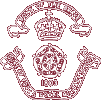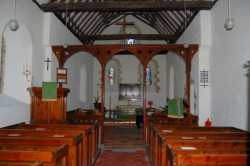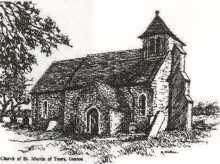


 |
 |
|
 |
||
| Navigation links at the bottom of this page | |||||||||||||||||||||||||||||||||||||||||||||||
| Guston Cemetery | |||||||||||||||||||||||||||||||||||||||||||||||
|
|||||||||||||||||||||||||||||||||||||||||||||||
Robert Louis Stephenson provides a fitting couplet in his poem Requiem for the shady nook of the Guston cemetery where lie a number of boys who died at school and one member of the school staff. The Church of St. Martin of Tours, Guston, shown in the magnificent etching below, has been associated with the Duke of York's School since it moved from Chelsea, London, in 1909. Not as familiar to students of the school perhaps as the Guston Gate, the lovely Norman Church and its cemetery provide as beautiful and peaceful a last resting place as any to be found in the Diocese of Canterbury. |
|||||||||||||||||||||||||||||||||||||||||||||||
 |
St. Martin of Tours (with acknowledgement to Diocese of Canterbury) |
 |
|||||||||||||||||||||||||||||||||||||||||||||
The value of the property increased with time at a modest rate. By 1291, the Papal tax return valued the church at £10 and the vicarage at £3 6s 8d. One can imagine what its value would be today, but real estate values aside, the Church of St. Martin of Tours is among the most ancient buildings in the realm. Its graveyard has provided a last resting place for countless generations of citizens of the Parish as well as soldiers, sailors and warriors returning to England’s shores from overseas. Many of its headstones date back 300 years. When the School moved from Chelsea to Dover it was within the Parish of Guston. The Church Council generously dedicated an area of the cemetery for use by the school. Since that time twelve boys and one member of staff have been buried in the school's part of the cemetery. The school authorities provided a headstone for each boy buried there as well as for RSM Duggie Haig. In addition, a monymental marble cross sits as a centre piece to the Duke of York's School plot bearing the inscription: |
|||||||||||||||||||||||||||||||||||||||||||||||
At intervals along the path that borders the ground the headstones have been set to remind visitors who these boys were and when they died. The stones, provided at the school's expense and set neatly in place look clean and trim and well-cared for, but that was not always the case. Phil Roberts, now living in Australia, recalls that about 1965 when he was a pupil, he joined the Voluntary Service Club. This meant dressing in a mixed array of denims, rugby, gym and like ‘mufti’ outfits to pass through the Guston Gate to get to reach the Village. There the volunteers tended the pensioners' gardens, did the heavy digging and did odd jobs for the elderly. They were rewarded, he says, with endless cups of tea and the odd sticky bun. Gardening and cleaning chores for villagers was not the only work they did. |
|||||||||||||||||||||||||||||||||||||||||||||||
|
|||||||||||||||||||||||||||||||||||||||||||||||
|
|||||||||||||||||||||||||||||||||||||||||||||||
Editor: With sincere thanks to Fiona Archontoulis and Stephen Sharry of Brisbane, Australia, for the colour photographs of Guston Cemetery. |
|||||||||||||||||||||||||||||||||||||||||||||||
| ||||||||||
|
© A. W. Cockerill 2011 Site Map Contact me | ||||||||||